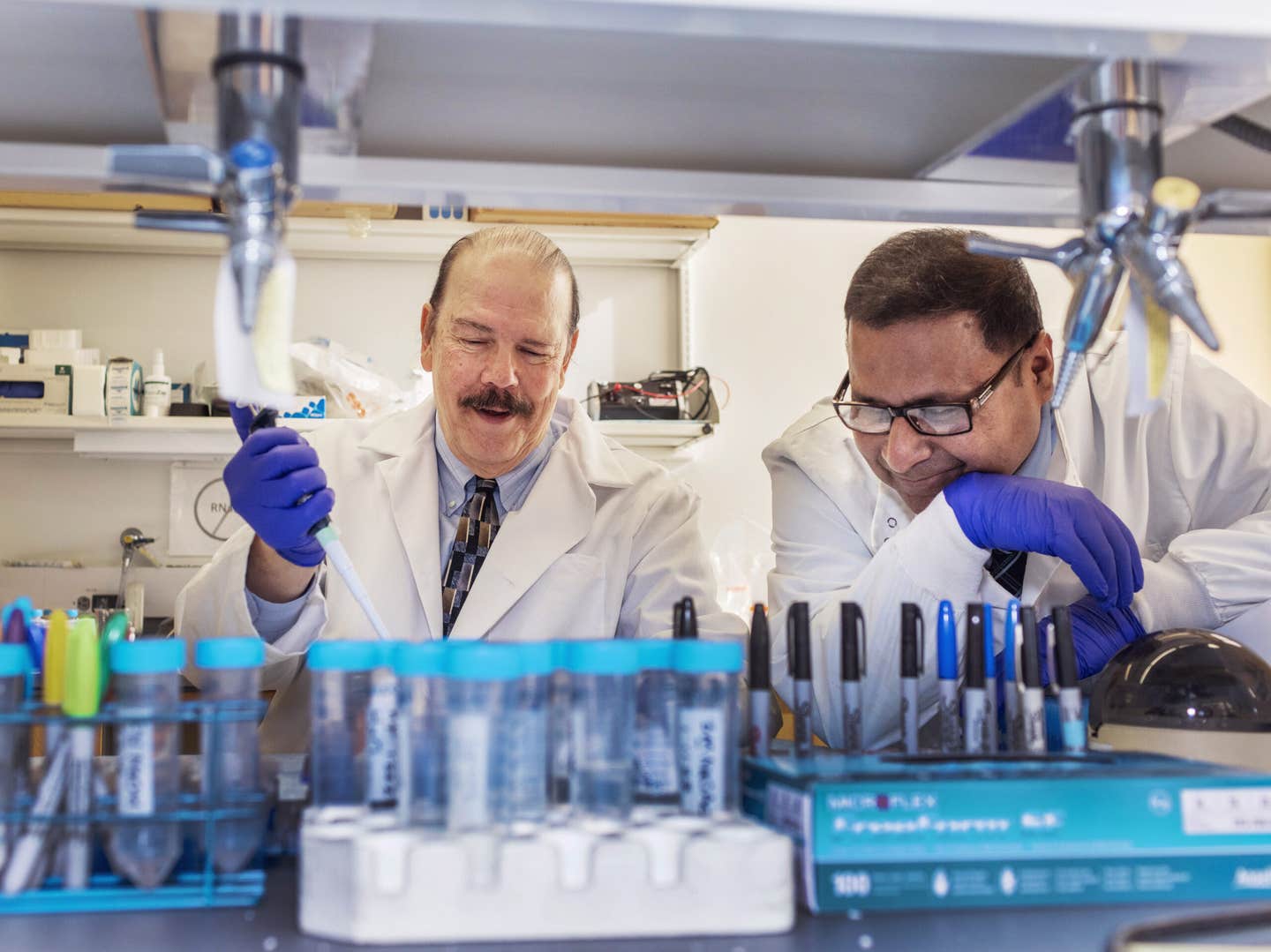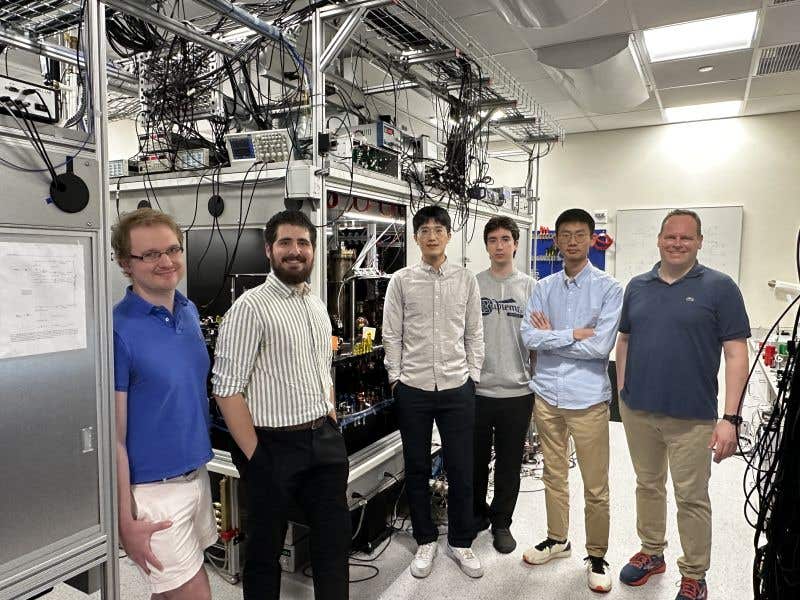New bio-engineered molecule kills cancer cells and activates the immune system
Researchers have created a new therapy that kills brain tumors and boosts immune response—offering real hope against glioblastoma.

A new Fusion Superkine therapy could revolutionize glioblastoma treatment by killing tumors and boosting the immune system. (CREDIT: Daniel Sangjib Min)
A groundbreaking study may change how doctors treat glioblastoma, one of the deadliest brain cancers. Researchers Virginia Commonwealth University have developed a powerful new therapy using an engineered molecule that kills tumor cells and activates the immune system at the same time. This therapy not only attacks the tumor but could help stop it from coming back—a major leap in treating a disease with few effective options.
Glioblastoma grows fast and spreads deeply into the brain, making it extremely hard to treat. Despite surgery, chemotherapy, and radiation, most patients see their tumor return within months. When it comes back, it’s often even more resistant to treatment. Over 90% of cases relapse within six to nine months, and the survival outlook remains bleak.
A Fresh Approach to a Deadly Problem
The main challenge in fighting glioblastoma lies in its unique tumor environment. It acts like a shield, hiding the cancer from the immune system and preventing therapies from working. This “cold” tumor microenvironment not only blocks immune activity but also prevents most drugs from entering the brain. To overcome this, researchers took a bold approach: build a therapy that directly kills the tumor cells and supercharges the body’s natural defenses.
The study, published in the Journal for ImmunoTherapy of Cancer, was led by Paul B. Fisher, MPh, Ph.D., FNAI, and Swadesh K. Das, Ph.D. Their team at VCU Massey Comprehensive Cancer Center and the VCU Institute of Molecular Medicine created a novel treatment called the Fusion Superkine, or FSK.
This single molecule packs a one-two punch by delivering two immune-activating proteins—known as cytokines—that work together to kill cancer and boost immune response. “This is the tip of the iceberg,” said Fisher, who is also a professor in molecular medicine. “We’re aiming for the ‘holy grail;’ a cure for this devastating cancer.”
What Makes the Fusion Superkine Unique
The FSK combines two powerful molecules. The first is IL-24S, a next-generation version of a gene called melanoma differentiation associated gene-7/interleukin-24. Known as a “Superkine,” IL-24S has improved stability, stronger biological activity, and can trigger cancer-selective cell death. The second molecule is IL-15, a cytokine that boosts immune cells like natural killer (NK) cells and T cells, both key to fighting tumors.
Related Stories
- AI breakthrough offers non-invasive brain cancer screening
- 4,000-year-old skull reveals early attempts at brain cancer surgery
By bringing these two agents together into one fusion molecule, the therapy not only destroys the cancer directly but also sparks an immune attack inside the brain. In animal models, the FSK caused the tumors to shrink more than either IL-24S or IL-15 alone.
The treatment also increased the presence of various immune cells—including macrophages and dendritic cells—that play a role in tumor destruction. Swadesh Das explained, “Our ‘Fusion Superkine’ represents a distinctive platform for immune-gene therapy that not only eradicates tumor cells but also boosts localized immune activity, resulting in prolonged effects.”
Cracking the Brain's Defense System
One major barrier in brain cancer treatment is the blood-brain barrier (BBB). This natural defense system keeps harmful substances out of the brain—but it also keeps out most cancer drugs. To get around this, the research team developed a clever delivery method called FUS-DMB, which stands for focused ultrasound with double microbubbles.
This method uses sound waves and microscopic bubbles to gently open the BBB without causing damage. It allows the Fusion Superkine, carried by a type 5 adenovirus (Ad5), to pass through the barrier and reach the tumor. This “stealth” delivery ensures the therapy gets where it’s needed, without affecting other parts of the body. Fisher said the viral delivery system “permits safe and effective targeted delivery through the blood-brain barrier into the brain.”
A peer reviewer of the study praised this approach, noting that “the engineering and successful testing of an adenoviral vector capable of simultaneously delivering two distinct cytokines represent a significant milestone.” They called the FUS-DMB delivery method “a groundbreaking advancement” and suggested it could apply to other forms of gene and virus-based treatments.
More Than Just Brain Tumors
The potential impact of this therapy goes beyond glioblastoma. Because FUS-DMB improves how medicines are delivered into target tissues, it could be used for other hard-to-reach tumors. The ability to safely and selectively open the BBB—or other tissue barriers—could help treat cancers in other organs, or brain tumors that have spread from elsewhere in the body. “This delivery method can be extended to other therapeutic viral vectors,” the reviewer added. “It’s a very versatile and impactful platform for advancing virus-based immunotherapies.”
The team hopes to explore the use of FSK on actual human tumors in future trials. A clinical study in brain cancer patients is being planned for 2026. If successful, this could mark the beginning of a non-invasive treatment era for glioblastoma and other brain cancers. As Fisher noted, “The bottom line is that in the future we may be able to treat both primary brain tumors and secondary brain tumors non-invasively without surgery.”
Outlook for the Future
Though still in early stages, the Fusion Superkine therapy offers new hope for a disease that has long defied modern medicine. By combining the killing power of IL-24S with the immune-activating force of IL-15, and delivering it through a novel and non-invasive method, researchers may be unlocking a key to longer survival—and possibly a cure.
The study’s results also point to a larger trend in cancer treatment: the blending of direct tumor destruction with immune support. As more therapies like this are developed, cancer may one day become not just treatable but preventable from coming back.
Note: The article above provided above by The Brighter Side of News.
Like these kind of feel good stories? Get The Brighter Side of News' newsletter.
Mac Oliveau
Science & Technology Writer
Mac Oliveau is a Los Angeles–based science and technology journalist for The Brighter Side of News, an online publication focused on uplifting, transformative stories from around the globe. Passionate about spotlighting groundbreaking discoveries and innovations, Mac covers a broad spectrum of topics—from medical breakthroughs and artificial intelligence to green tech and archeology. With a talent for making complex science clear and compelling, they connect readers to the advancements shaping a brighter, more hopeful future.



